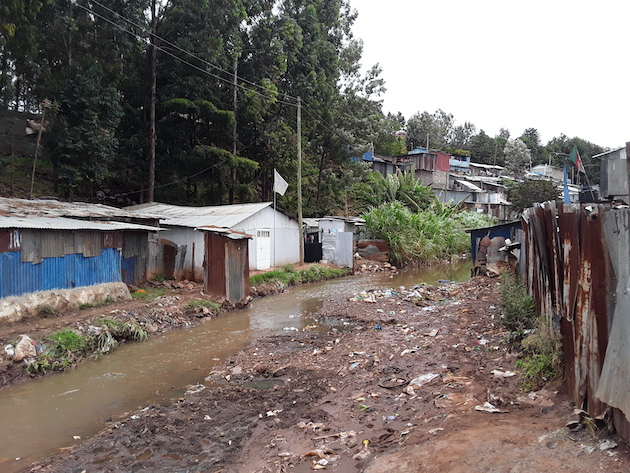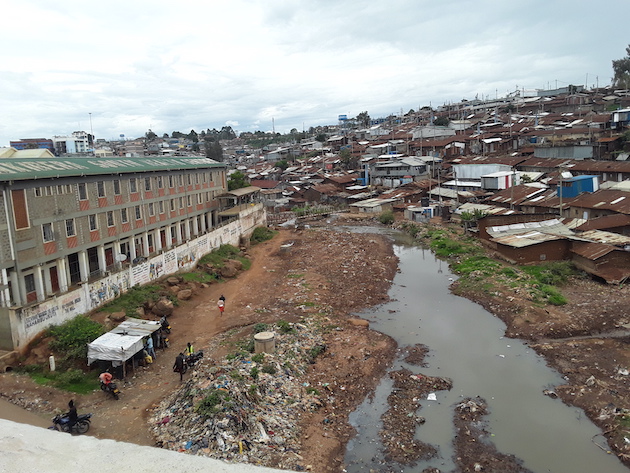Kenyas Hits and Misses on Journey to Eliminating Plastic Waste — Global Issues
NAIROBI, Jun 16 (IPS) – Plastic bags were a part and parcel of life in Kenya. More than 100 million plastic bags were used annually in Kenyan supermarkets alone, with at least 24 million plastic bags discarded every month. Kenya was choking under the weight of plastic bags.
“Every food market, big or small, used plastic bags to wrap raw or cooked food items for their customers. We could not imagine a life without plastic bags. There was even a time people used plastic bags as flying toilets. People around here would poo in them and throw them away for lack of toilets,” Jane Wanjeri, a food vendor in Kibra, an informal settlement in Nairobi County, tells IPS.
Worse still, in 2017, a government study raised the alarm that plastic waste was entering the food chain as at least 50 percent of livestock in peri-urban areas had ingested plastics. The use of plastic bags was creating an irreversible catastrophe.
It takes more than 100 years for plastic bags to degrade, says Patrick Mureithi, an independent environmental researcher and activist.
In a groundbreaking move in 2017, the government banned single-use plastic bags. The ban includes severe penalties of fines between USD 20,000 and USD 40,000 and or one to four years in prison for noncompliance. More than six years later, the ban is one of the world’s strictest and most efficient.
When the UN Member States agreed to start negotiating a new global treaty in 2022 to end plastic pollution in a historic move to protect wildlife, the environment, and humans from the severe, harmful effects of plastic pollution, Kenya was already well on the way.
“The single-use plastic bag ban was one of three approaches that the country is using to tackle plastic pollution. Other strategies are improvements to solid waste management as well as administrative and budgetary responses that include giving businesses incentives for recycling plastic,” says Omondi Otieno, a government official in the Ministry of Environment and Forestry.
But recent studies show Kenya has not made significant inroads in improvements of solid waste management. A recent report titled Making Policy Work for Africa’s Circular Plastics Economy found that despite the ban, in Kenya, “there has not been a noticeable reduction in the overall amount of plastic waste.”
According to the Kenya Plastics Pact (KPP), an ambitious, multisectoral collaborative initiative to address plastic waste and eliminate plastic pollution, an estimated 22,000 tonnes of waste is generated in Kenya per day, and at least 20 percent of it is plastic.
Kenya’s daily plastic consumption through items such as single-use straws, plastic bottles, and containers is averaged at a high of 0.03 kilograms per person.
Estimates show the amount of plastic that becomes waste across the country is 0.5 to 1.3 million tonnes per year, of which only eight percent is recycled. The rest is landfilled, incinerated, or released back into the environment.
According to KPP, approximately 80 percent of plastic packaging materials used locally are made of imported virgin polymers processed into packaging domestically. And, to a lesser extent, domestically recycled materials, with only around 20 percent of packaging, are being imported in the form of packed or made products.
Additionally, of the total plastics produced in the country, an estimated 36 percent are used in packaging. Of the 36 percent, at least 85 percent end up in landfills and unregulated dumpsites. The Sustainable Waste Management Act of 2022 does not provide a clear definition of recyclable.

In this regard, KPP recently released the Design Guidelines for Recyclability in Kenya to ensure that 100 percent of plastic packaging is reusable or recyclable by 2030. The guidelines were signed and endorsed by key stakeholders such as plastic packaging manufacturers and prominent fast-moving consumer goods (FMCG) brands.
They were also endorsed by committed small and medium businesses, informal waste pickers’ associations and recyclers, influential industry associations, environmental NGOs, advocacy groups and civil society, and the Ministry of Environment and Forestry.
First, of their kind, the guidelines are centered on addressing plastic waste and pollution at the source. Rethinking how plastic packaging can be designed, used, and reused in a more circular manner, as opposed to the linear business-as-usual system of take-make-waste plastic.
“A plastic circular economy is a sustainable economic model where plastics remain in circulation for a much longer period and out of the environment. In a circular system, plastics are reused and recycled at the end of their lifespan,” Omondi explains.
He says creating a plastic circular economy will have significant positive implications for species, ecosystems, and overall socio-economic systems, including Kenya’s extensive Indian Ocean coastline, estimated at 1,420 kilometers.
Government estimates show that in the coastline County of Mombasa alone, at least 3.7 kilograms of per capita plastic waste ends up in the ocean. Unmitigated, experts such as Mureithi warn that there could be more plastics than fish in the Indian Ocean by 2025, where more than 1,300 billion pieces of plastic find their way annually.
These guidelines are a step in the right direction, providing recommendations to decision-makers on how to design plastic packaging to be compatible with current and future projections of mechanical recycling infrastructure. To keep up with a dynamic world, the guidelines will be updated and amended in response to changes in the collection, sorting, recycling technologies, and infrastructure within the country.
IPS UN Bureau Report
Follow @IPSNewsUNBureau
Follow IPS News UN Bureau on Instagram
© Inter Press Service (2023) — All Rights ReservedOriginal source: Inter Press Service
Check out our Latest News and Follow us at Facebook
Original Source







